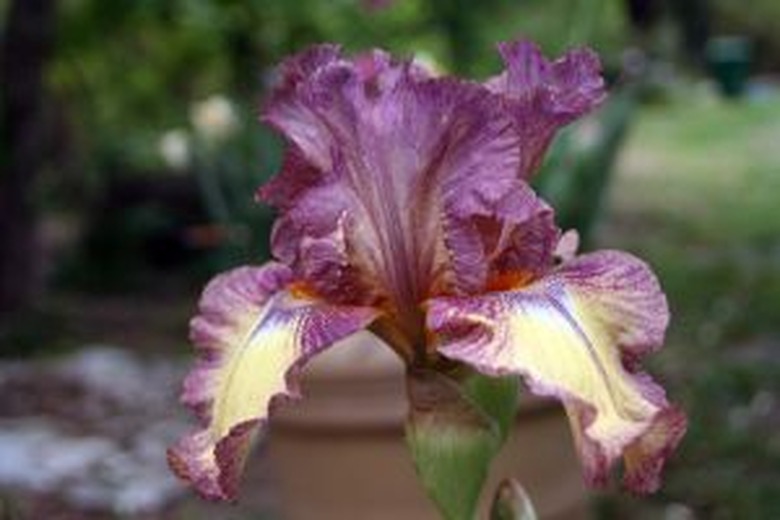How To Winterize Bearded Iris
Things Needed
- Shears
- Straw mulch
Tip
Divide bearded iris six weeks after blooming and before winter preparations begin. This gives the plant a chance to send up autumn leaves after being replanted. Irises benefit the most from spring fertilization, but in poor soils, a layer of fresh compost around the plant may be beneficial.
Warning
Do not allow winter snow melt to accumulate and sit on the iris beds, as it will cause the rhizomes to rot.
Bearded iris are prized for their large blooms and the fuzzy, beard-like attachment to the interior of their petals. Blooming in early summer, the spear-like leaves remain green for a while longer to collect and store nutrients in the rhizome for next year's growth. Bearded iris are hardy perennial plants that fare well in most winter conditions. A minimal amount of maintenance gets them ready to over-winter so they can emerge once more in the spring.
Step 1
Stop watering your bearded iris after the last blooming period. Allow only natural rainfall until the following spring so the iris has a chance to go dormant.
Step 2
Allow the summer leaves to die back naturally. Winterize in late autumn once temperatures begin to drop and the iris has produced a small ring of new leaves.
- Bearded iris are prized for their large blooms and the fuzzy, beard-like attachment to the interior of their petals.
- Blooming in early summer, the spear-like leaves remain green for a while longer to collect and store nutrients in the rhizome for next year's growth.
Step 3
Remove all yellowed and dead leaves, cutting them off at the soil surface or 2 inches from the rhizome with sharp shears. Leave the new green leaves in place as they collect nutrients during the winter months. Snip off any remaining flower stalks at their base.
Step 4
Clean out all leaves, grass and other garden detritus that is collected around the base of the bearded iris. Remove any soil or mulch that has covered the top of the rhizome—iris rhizomes must be right at the soil's surface and barely visible to thrive.
Step 5
Refrain from mulching around the iris as this may cause the rhizome to rot. Apply a 1-inch layer of straw mulch over the top of the rhizome only for extended periods below freezing temperatures, and remove immediately once the weather warms.
- Remove all yellowed and dead leaves, cutting them off at the soil surface or 2 inches from the rhizome with sharp shears.
